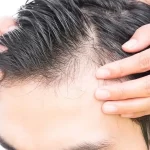Biomechanics is the scientific study of how the body moves and how various forces interact with it. By blending principles of physics and biology, biomechanics analyzes how muscles, bones, and joints work together to create motion. Biomechanics understands the movement of your body by identifying patterns and determining ways to enhance efficiency, reduce strain, and prevent injuries. It provides insights into posture, balance, and coordination, helping individuals improve physical performance and maintain long-term health. From designing better exercise routines to supporting rehabilitation and sports training, biomechanics offers practical tools to optimize movement in daily life and athletic activities alike.
Let us explore five ways biomechanics helps us move smarter and protect our bodies.
Improves posture and alignment
Biomechanics helps identify improper posture and misalignment in the body. Poor posture can strain muscles and joints, leading to discomfort or injury over time. For example, slouching while sitting can cause back and neck pain. By studying how the spine and pelvis work together, biomechanics provides insights to maintain better posture. Correcting alignment reduces strain on the body and promotes healthier movement patterns, making daily activities more comfortable and efficient.
Prevents injuries by identifying stress points
Biomechanics pinpoints areas in the body that experience excessive stress during movement. Improper techniques in activities like running, lifting, or even walking can lead to overuse injuries. For instance, uneven weight distribution during running can stress the knees and ankles. By analyzing these patterns, biomechanics helps adjust movement techniques to reduce stress. These adjustments prevent injuries and support long-term joint and muscle health.
Enhances athletic performance

Athletes use biomechanics to refine their techniques and improve efficiency. For example, runners can analyze their stride mechanics to increase speed and reduce energy waste. In swimming, understanding how the shoulder rotates can improve stroke power. Biomechanics helps athletes use their bodies more effectively, minimizing effort while maximizing results. This knowledge leads to better performance and reduces the risk of sports-related injuries.
Supports rehabilitation and recovery
Biomechanics plays a key role in rehabilitation after injuries or surgeries. It evaluates how injuries affect movement and identifies strategies to restore normal function. For example, after a knee injury, biomechanics can guide exercises that rebuild strength and mobility while avoiding stress on the joint. This personalized approach speeds up recovery and ensures safe progress, helping individuals regain independence and return to their activities.
Designs better tools and equipment
Biomechanics informs the design of tools, footwear, and ergonomic equipment that support efficient movement. For instance, running shoes are designed to reduce impact forces on the feet and legs based on biomechanical principles. Similarly, ergonomic chairs and workstations are created to minimize strain during prolonged sitting or repetitive tasks. These innovations improve comfort and protect the body from unnecessary stress.
Final thoughts
Biomechanics provides valuable insights into how the body moves and interacts with forces. By improving posture, preventing injuries, enhancing performance, supporting recovery, and designing better tools, this field helps us move more efficiently and with less strain. Understanding biomechanics empowers us to protect our bodies and achieve optimal physical function in all aspects of life.











